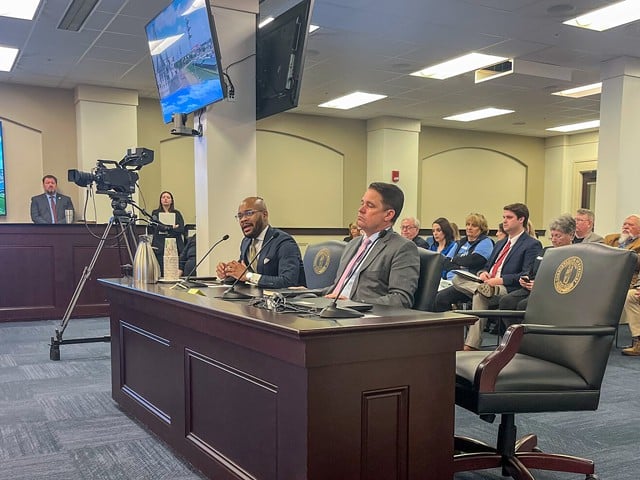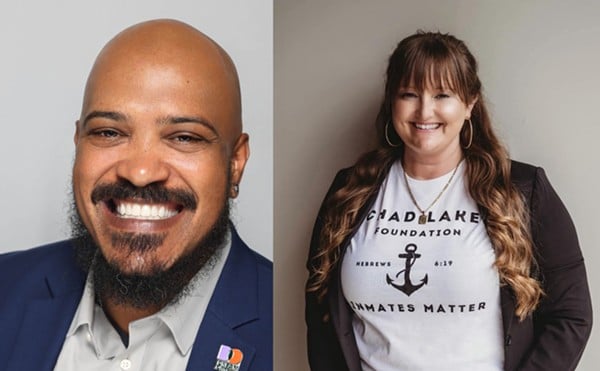“Kentucky Constitutional Amendment 2, the Allow State Funding for Non-Public Education Amendment, is on the ballot in Kentucky as a legislatively referred constitutional amendment on November 5, 2024.
A "yes" vote supports amending the constitution to enable the General Assembly to provide state funding to students outside of public schools.
A "no" vote opposes amending the constitution to enable the General Assembly to provide state funding to students outside of public schools.” — Ballotpedia
On the surface, school choice, or Amendment 2, looks like a great alternative to parents who want their children to have opportunities at what they perceive to be better schools but the reality is bleak. I’m going to speak about the usual outcome of “school choice.” Statistically, most kids do not benefit from public funding going to private schools. Often the benefit goes to kids who are already in private school systems, or to the schools that suddenly qualify for public dollars, but are not up to the same standards as public schools.
In Indiana, school “choice” is a thing. It doesn’t just fund students going to private schools, it also partially funds alternative schools that don’t operate within the same public school standards although they may technically be “public schools.”
These schools include educational models like Montessori.
When our son was born, we thought about his education a lot as we saw the type of child “we thought” he was. He was creative and bright, and we didn’t want to lose that by putting him in a school where desks were the main mode of learning. Neither of us visited a regular school before we met someone who convinced us that Montessori was the right school for him.
When he was old enough, we went to a local Montessori-style school for an orientation. They showed us unique classrooms, where students would learn hands-on and through methods that sometimes seemed weird but made sense when you saw the kids participate. The school showed us the hype video where a kid went to regular school where they sat at desks all day and didn’t have an active part of their learning. The “light went out” (the love of learning) for that “theoretical” kid. Then they played the Montessori school “keeping the light on” portions of the video.
At first, we found our son loved learning in the way that Montessori was taught. He shaved soap, learned cursive, washed and shared fruit with his class. All sorts of things that seemed a little offbeat but helped his fine motor skills and his ability to do things for himself.
After those first two years, we noticed something. People were leaving this school. No one gave many specifics, but they just said it didn’t feel right for their child anymore.
We also noticed that that light that our son had was beginning to flicker. We’d take him to school and he would run from his classroom to the front door. We had meetings with the school principal and his teachers and were convinced that our son, a generally mild-mannered boy, was having some major behavioral or social issues.
Before coming to writing, I spent more than 15 years working with children and studying child development so when I recognized age-appropriate expressions of anger or frustration, I would resist what the principal was claiming. That a six-year old should never cry or have outbursts was unusual. It isn’t the norm. Kids at that age are still learning to manage these big feelings. The school suggested we have him tested.
At first, we resisted, we took a friend who was a children’s specialist to a meeting with the school, and she helped ask the right questions and advocate for solutions that didn’t involve spending hundreds of dollars to diagnose normal behaviors.
As we stayed at the school a bit longer, we saw increasing out-of-character behaviors from our son both at home, and in his resistance to going to the school. Then, the pandemic happened.
During the pandemic, the school provided sessions with the teachers online, and as I listened and worked with him, I began to realize that the teachers didn’t seem to have the necessary training to fully instruct kids in a robust way. My husband and I took over the bulk of his instruction.
After the pandemic, we started part-time school at the principal’s request. My guess is she needed more state dollars because several families didn’t return post-pandemic.
Again, we began to notice weird behaviors with our kid who during the pandemic regained some of the light we were beginning to see fade.
There was a day that the teacher called us to say that our son had run from the classroom out of the building. Which meant he would have run past several classrooms and adults without anyone stepping in to find out why. When I asked how this was possible in a school full of adults and administrators, suddenly we were told that he was “accompanied” by an adult the whole time. Sounded fishy to us.
But at this point, we were concerned enough to finally begin to seek outside help. Maybe there was something going on that our son couldn’t tell us. His behaviors were really telling us everything we needed to know. Sometimes your kid tells you without words and our son was screaming for help in the way that he knew how.
We took him to occupational therapy. They tested his speech. Definitely not an issue. His vocabulary at 8-years-old was that of a 13-year-old. He had a slight vestibular issue but that was something that could be easily worked through, and likely caused by childhood ear infections. So nothing there.
We spoke with his pediatrician about autism, anxiety and oppositional defiant behavior. Again, we did the screenings, which the teachers also had to respond to.
First the occupational therapist said what we were thinking, “I don’t think a lot of learning is going on at that school.” We agreed.
“It isn’t the kid.”
Then the pediatrician told us something similar. “I think he may do better in a more structured environment.” When we told him what the OT had said, he pursed his lips and nodded. “I’d have to agree.”
And then we noticed the exodus happening around us.
Family after family had fights and disagreements with the principal of this school — and miraculously the parents were always at fault, the kids were out of control, and the principal — the school saint — was never wrong. Except, she was very wrong, and the school that she runs is not at the standards of the public schools. Though they are a public charter, the standards for teacher education are much lower. There are few certified teachers, and many parents who really just like the idea of Montessori and agree with this school's methods, working in the classrooms.
If it were only our story, I’d be hesitant to write this but it is the story of many parents of this school and many many families who look for unique learning opportunities for their children and find that unique or private is so many times lacking in the very basics that kids need.
In retrospect, I realized that this school didn’t have a library (media center) and it had no extracurricular activities that come packaged with public school. It had the occasional “enrichments” that parents had to pay for that lasted only a few weeks at a time.
The conversation with our son’s doctor sealed our decision. We called the superintendent and then a public school not far from this other school and asked to visit. What we saw was a rich environment that really, truly served the whole kid and not just the “Montessori” idea of the whole kid… without a library or other physical outlets, other than playing in the woods.
We were sad that we’d denied our child this experience, a very regular and normal kids’ experience. We’ve always participated actively in his education but the instruction he was given by real certified professionals was miles ahead of what he was getting at this other place. The teachers at the new school expected him to have deficits like many of the other kids that had come from this Montessori school because many kids had left that school with learning deficits that made it difficult for them to transition.
The one thing we did right was to step in where those other teachers fell short, so he suffered less of a deficit but we’re still 2.5 years later catching up on a few things.
Keep your public education funded and when the inevitable breakdown of these charter schools comes, your child won’t suffer.
The carrot that Kentucky is dangling before parents isn’t a good one. It’s a dupe for really putting the money where it belongs, in the hands of qualified educators in public school systems.
Why fund the few and leave behind the many? It’s unreasonable and to the detriment of our entire society.
Protect your tax dollars from these crooks who start schools because their kids didn’t work out in public schools. Don’t be sold a line on methods that show you miracles when most kids can make miracles wherever they are. The miracle is often your child. The quality of the environment depends on the money it is given. Our public schools which serve as the hub of education in our country should be well-funded and a priority for all of us seeking to produce well-rounded citizens for a good future.
Private schools are fine for kids whose parents can afford it but for those who can’t, the opportunity for an equally quality education shouldn’t mean taking public tax dollars from parents who are fine with public schools and pushing that money to pad the pockets of private school and charters that will refuse and often fail to meet the standards that public educators are held to. Our kids deserve better and free education.
After all that we went through with this Indiana charter, we found a message board where schools are rated. We noticed many parents telling the same story we had experienced.
I also looked into the rankings of this school within the state and found that it had a high instance of expelling kids with special needs or difficulties, and that many of them were students of color. “Why is that?” I wondered. But, after learning that the “educators” are barely educated to state standards, it made sense that this place was ill-equipped to teach these kids, and the oversight which is supposed to be done by Ball State, seemed to be lacking.
I hope that our story doesn’t become yours, Kentucky. But please, take this warning seriously. Educators should be funded, and education should be free for your child and every other child in our nation. It is foundational and a matter of national security. It is also a matter for the soul of your child.
We moved our son to public school, and he has thrived. His grades are just fine, he's playing an instrument in band, and overall a much happier child. Those outbursts are gone. I mean, he's a tween now so there's other types of outbursts. He's able to verbally tell us now that his time at that other school wasn't a good one. His story with school choice ended on a positive note, but it's lesson we learned is simple, we were all taught as children that "all that glitters is not gold."
This amendment is not gold.







